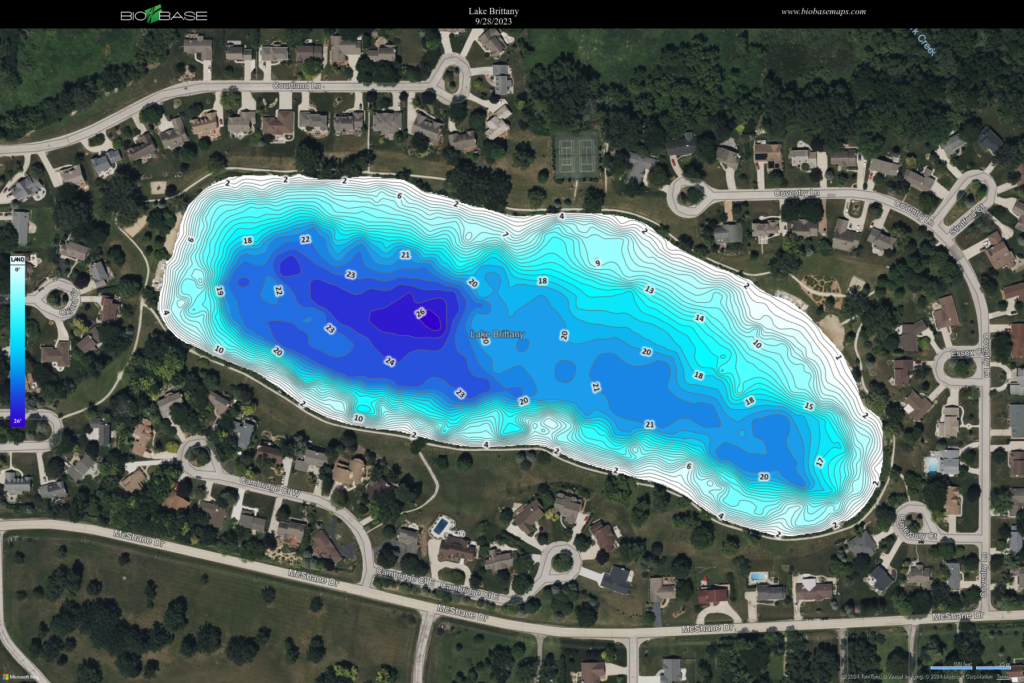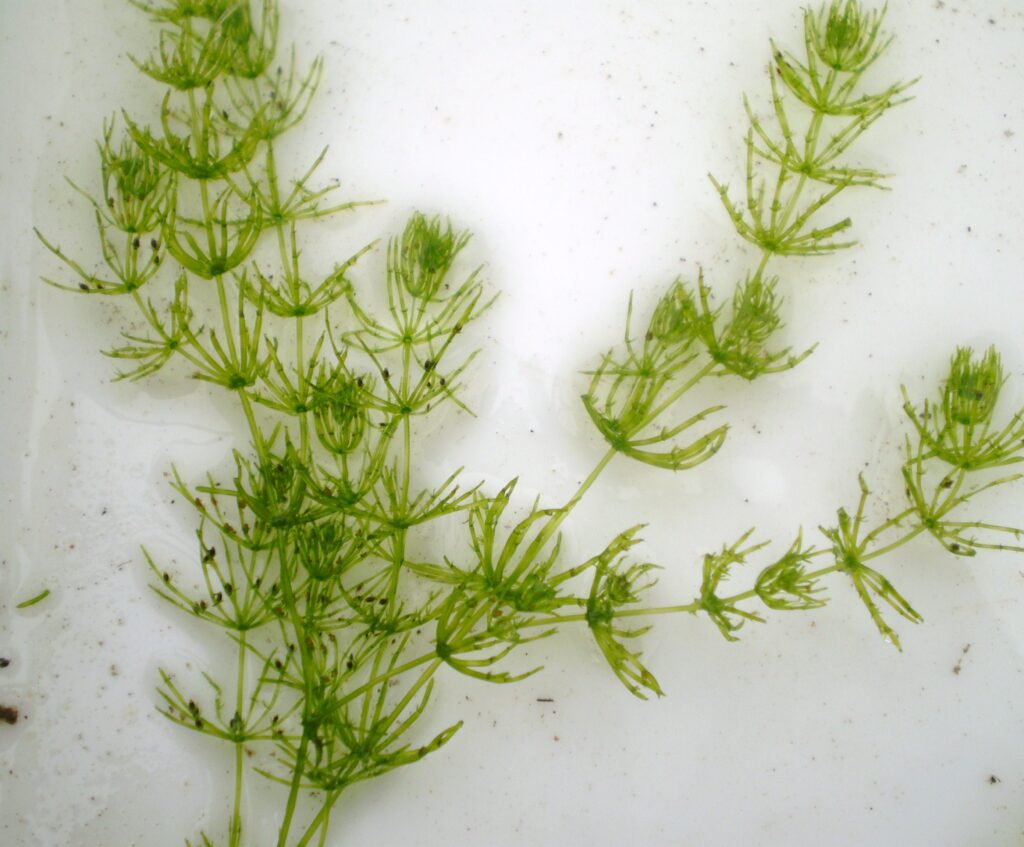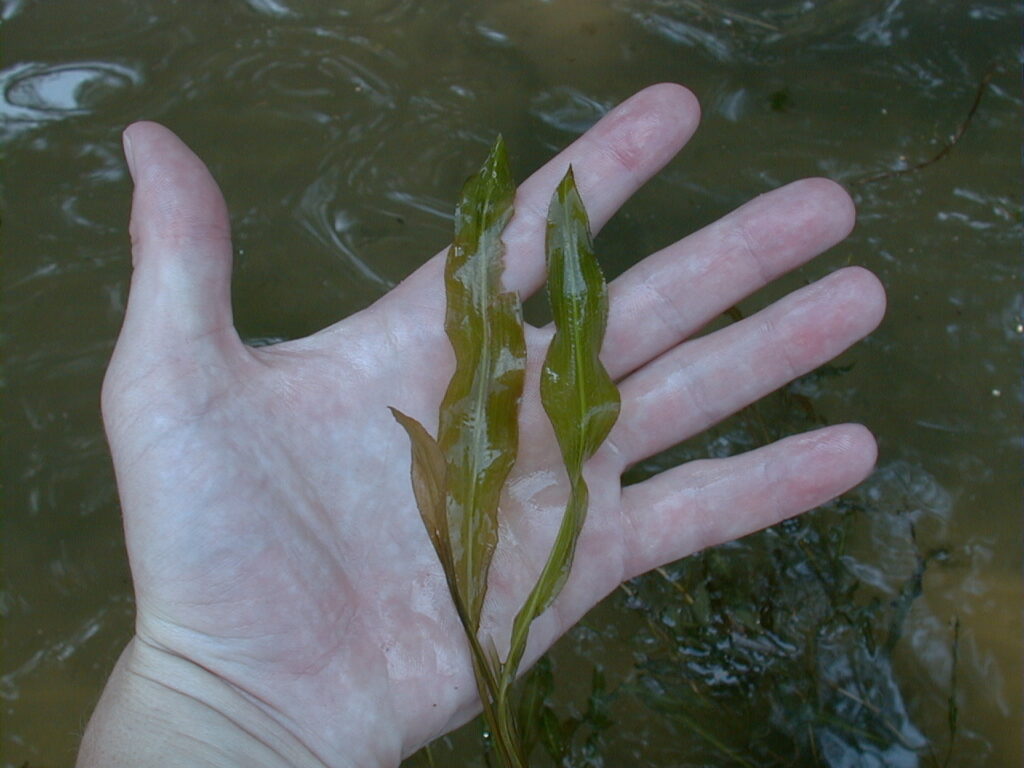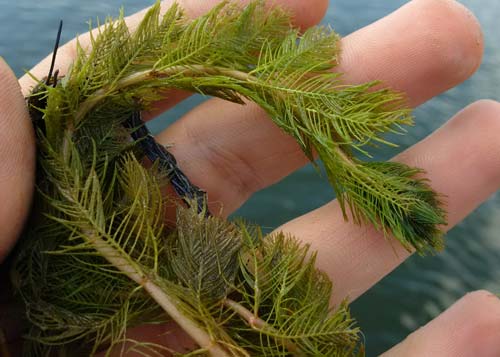
Native and invasive Aquatic Plants
Lake Brittany has two main species of native aquatic plants: Chara & Illinois Pond Weed.
Chara

Chara (commonly known as Stonewort; Skunkweed; Sandgrass) is an advanced form of algae often mistaken for a plant. Chara stabilizes bottom sediments; provides food for waterfowl and cover for fish. Chara also supports insects and other small aquatic animals, which are important food for the bluegills and largemouth bass in our lake. Chara also increases water quality and clarity. It is a good stabilizer and considered valuable fish habitat. You can see chara especially well on the east end of the lake, but it blankets our entire lake.
Illinois Pond Weed

Illinois Pondweed provides forage and cover for aquatic animals; the tuber is an important source of food for waterfowl. The Illinois pondweed can be found throughout our lake. It provides great foraging cover for the northern and tigers in our lake. In fact, some refer to this plant as musky weed. In summer, you can see it emerging from the water. This is good! Those are the flowers of the plant. This is how the plants propagates.
Controlling Our Native & Invasive Plant Growth
We currently contract with Aquatic Biologists to maintain a healthy density of aquatic plant growth within the boat storage areas and swimming beaches. Aquatic Biologists also inventories the density and location of the existing millfoil communities within the lake. At this time, it is not dense enough to chemically remove.

Eurasian Watermilfoil (Myriophyllum spicatum) is considered one of the most aggressive and problematic aquatic plants in the U.S. because of the dense colonies which it forms. Eurasian watermilfoil competes aggressively to displace and reduce the diversity of native aquatic plants (our chara and pondweed). Milfoil also cycles nutrients from the sediment into the water column which can lead to excess algae growth.
Dense cover of milfoil may increase high survival rates of young fish; however, larger predator fish lose foraging space and are less efficient at obtaining their prey thereby reducing the growth of our fishery.
Think of the chara as the grass and the milfoil as the dandelions. If we maintain a healthy chara population, it will keep the milfoil largely in check.
water quality monitoring
The ECC currently obtains water quality measurements and samples from the lake four times a year, per WDNR standard. The parameters that we test for are: phosphorus, chlorophyll-a, water clarity, dissolved oxygen, temperature, and conductivity. Please see the lake management plan for a more detailed description of how these parameters help give an overall picture of lake health over time. In general, if you think about going to the doctor and they take your weight, blood pressure, cholesterol, etc. that helps the doctor obtain a baseline and establish trends in your health over time. We are doing the same thing for the lake. The parameters we test for help to establish the baseline of the lake over time so we can monitor its health.
Below are the results of the water quality program since we started testing in 2021.